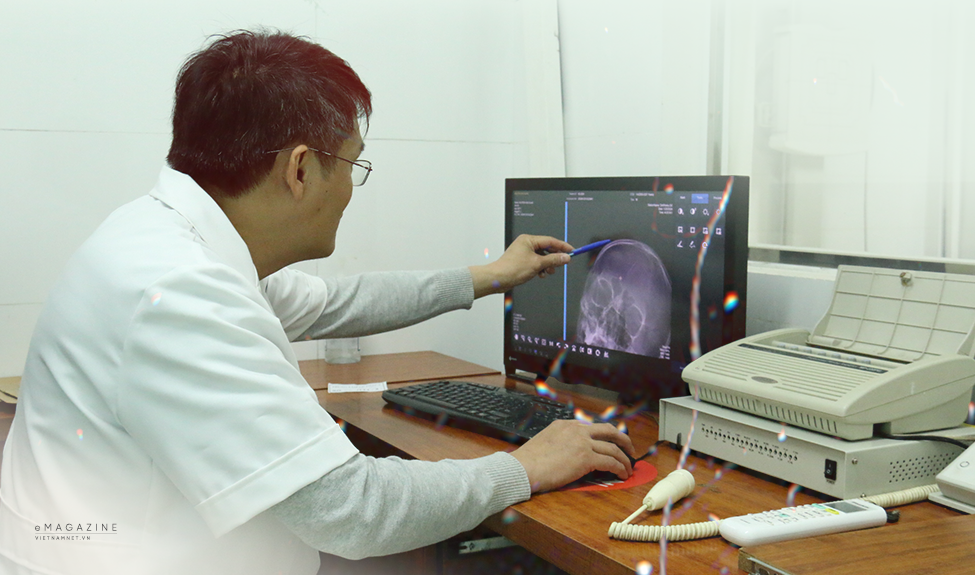
After graduating from Hanoi Medical University, Hieu applied for a job at the the National Institute of Criminal Sciences, waiting for an opportunity to obtain a seat at Hospital 198 under the Ministry of Public Security, where one of his relatives worked at the time.
On the first days at the institute, he worked hard while learning more about forensic medicine. At medical school, he learned general knowledge about forensic medicine. Only when working at institute did he realize that working on dead bodies is part of forensic science which covers many things and requires overall knowledge.
Hieu initially sought the opportunity to work at Hospital 198, but after a period of working at the institute of criminal sciences, he wavered between leaving for Hospital 198 or staying to work for the institute. Finally, he decided to continue to work for the National Institute of Criminal Sciences.
“The more I work, the more I feel attached and passionate about the profession,” he explained.
“What makes me love the career and stick to it for a long time is the happiness I can feel when my work is helpful to people and society,” he said.
In one case, a man declared that his relative was beaten after two arms were tied behind his back, because there were dark bruises on the back of the hand. However, after medical examination, the officers of the forensic medicine center found it was not a wound caused by hitting, but was a mark formed after death.
While lying down, the victim had put the back of his hand down, and the blood had seeped into the tissues under the skin. As the skin was not torn, the blood could not leak out, but created bruises called ‘livor mortis’.
So what are the differences between bruises caused by beating and ‘livor mortis’?
“If necessary, we have to incise the bruise to prove this is ‘livor mortis’. If victims are beaten, there will be clots of blood, while in the case of ‘livor mortis’, there will be no blood clots, and the blood just bleeds slightly,” he explained.
“This is important knowledge which allows me and co-workers to find the truth. Dead body examinations is an important occupation which brings fairness to all citizens,” he said.
In another case, one man came to have a forensic medical examination and said he was beaten and his kidney was swollen. However, ultrasound and X-ray results showed that it was a congenital cyst. The external wound on the waist area had not left scars and had not caused internal damage.
The examiners concluded that the injury rate was zero percent, and the attacker might be forced to pay administrative fine rather than face criminal procedures.
In another case, a couple came to meet forensic doctors one day. The woman accused the man of rape, but the man denied it, stating that "we love each other, it's a voluntary relationship".
“Forensic officers conducted an examination of her body and found no injuries on her body, no signs of abuse on her genitals, no signs of sperm in her vagina. So we affirmed that there were no signs of forced sex,” he recalled.
The investigation agency considers the results of the forensic examination to ensure fairness for both sides.
In another case, a man had a traffic accident. The car driver who caused the accident ran away. The victim was left lying on the road. It was dark and another car ran over the man on the road. The owner of the car thought he had killed the man and gave himself up to the police.
However, a forensic examination proved that the owner of the car was innocent. The victim died right after the first accident.
“If there had been no autopsy, one man would have been wrongly accused,” he said.
The results of forensic exams is an important factor that determines the fate of a person and, in many cases, the results raise controversy among involved parties.
However, forensic examiners cannot fabricate autopsy results because they are supervised by three parties, including the court, people’s procuracy, and the police. All examined results must be proven by scientific proof.
After a case wraps up, examiners have to try to forget the images of the dead bodies and put them in a "compartment of memories", so that they continue their work.
Nguyen Thao